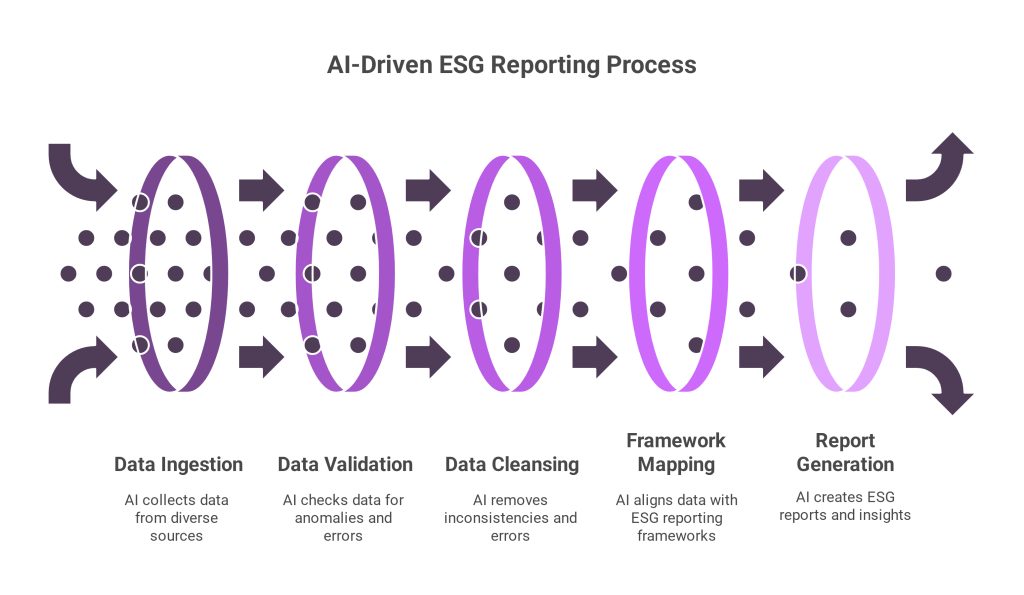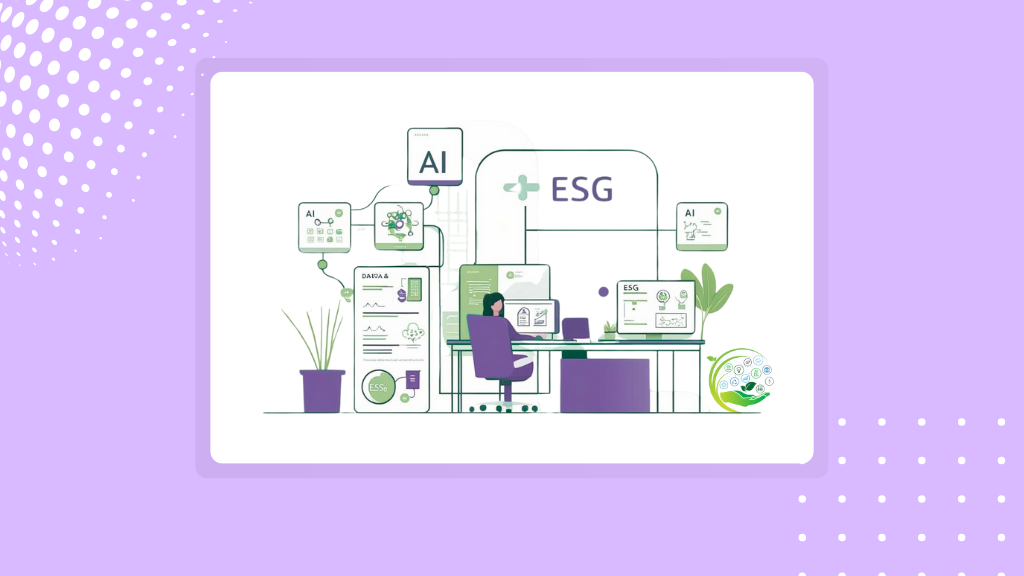Imagine stepping into the office of an ESG officer at a major Saudi manufacturer where the push for AI ESG compliance in Saudi Arabia is growing stronger by the day. The morning sunlight glints off towering storage tanks just beyond the window, but inside, the team wrestles with spreadsheets tracking energy usage, emissions figures, and water consumption across multiple sites. Each quarter’s sustainability report demands sign-off from the board and regulators, yet data gaps and last-minute corrections turn a strategic exercise into a frantic scramble. In today’s world, where investors and authorities expect exacting transparency from the EU’s Sustainable Finance Disclosure Regulation to emerging Saudi mandates, relying on manual processes is a recipe for burnout and compliance risk.
Artificial intelligence promises a radically different path, one that brings relief to ESG officers and sustainability managers. Rather than replacing your team’s expertise, AI handles the repetitive, error-prone tasks automatically, gathering readings, normalizing units, flagging anomalies, and even drafting disclosure tables aligned with frameworks like the Global Reporting Initiative and the EU Taxonomy. The result is not just faster reporting but a shift from firefighting data to driving meaningful environmental improvements.
Why Compliance Automation Matters for Saudi Businesses
Saudi Arabia’s Vision 2030, emphasizing sustainability and economic diversification, places new pressure on local companies to demonstrate environmental stewardship. Regulators and investors look for robust evidence of emissions reductions, resource efficiency, and social impact. For a petrochemical supplier or a burgeoning fintech startup, keeping pace with evolving local and global standards can feel overwhelming.
AI-powered compliance platforms bridge that gap, empowering your team. They connect to on-site IoT sensors, enterprise resource planning systems, and external databases to weave a continuous thread of ESG data. Instead of opening ten different applications, your team logs into one dashboard, where AI highlights any unusual spike in greenhouse gas intensity or a sudden jump in waste-water metrics. Compliance becomes an ongoing dialogue driven by timely insights rather than slipped deadlines.

Turning Data Into Insight
The backbone of any ESG report is reliable data. Traditional approaches force analysts to manually reconcile meter readings, supplier self-assessments, and public climate data, which can take weeks. In contrast, AI pipelines ingest raw information as it arrives whether it’s electricity consumption from a factory or procurement records from a vendor portal and then apply machine learning to validate each entry. If a water-use figure falls well outside historical norms, the system flags it for review before reaching your desk, making the process more efficient and less stressful.
Once data is cleansed, the technology maps it directly to the disclosure frameworks you follow. Preparing a CDP submission? Your Scope 1, 2, and material Scope 3 emissions flow seamlessly into the correct tables. Aligning with TCFD recommendations? AI drafts scenario-analysis sections based on weather data and production forecasts. What once required days of spreadsheet gymnastics now unfold in hours, leaving your team free to interpret trends and recommend real-world interventions like shifting production schedules to avoid peak-hour emissions or negotiating greener logistics contracts.

A Saudi Success Story
A Riyadh-based food-processing firm shows the value of AI. Their annual carbon-reporting cycle once took six frantic weeks. It required dozens of staff hours, reconciliations, and late-night edits.
After adopting an AI-driven ESG module, that cycle dropped to just two business days. Sustainability leads had time to focus on high-impact projects. The board praised the fast, accurate disclosures. Audits passed without a single finding.
Core Capabilities of AI-Driven ESG Platforms
Under the hood, an AI-powered ESG solution brings together several vital features:
- Continuous Data Ingestion from meters, ERPs, and third-party APIs so your dashboard always reflects the latest figures.
- Automated Validation that reconciles unit conversions and highlights data gaps or anomalies before they derail reporting.
- Framework Mapping that populates CDP, GRI, SASB, or EU Taxonomy templates with draft disclosures and audit trails.
- Insightful Alerts for rapid response, whether a spike in fugitive emissions or a lagging supplier sustainability score.
Rather than a fragmented toolset, this integrated approach turns compliance from a periodic chore into a strategic, data-driven advantage.
Overcoming Common Challenges
Skeptics often worry that AI demands perfect data or a massive IT overhaul. In practice, modern platforms tolerate messy inputs by applying intelligent inference: machine-learning algorithms estimate likely values based on historical patterns when sensor feeds fail. Legacy systems? A phased rollout lets you automate one critical feed first, build confidence, and expand. Change-management barriers dissolve when teams see how AI liberates them from clerical drudgery, allowing them to tackle high-impact sustainability projects instead.
Looking Ahead: The Future of AI ESG Compliance in Saudi Arabia
As we move deeper into 2025, several innovations promise to deepen AI’s role in ESG compliance:
- Generative AI that simulates decarbonization scenarios in plain language, helping boards evaluate investment choices.
- Blockchain-backed data integrity for an immutable audit trail, ensuring regulators trust every number.
- Real-time supplier-risk monitoring, flagging sustainability issues long before they escalate into headline news.
In this new era, compliance isn’t a checkbox. It’s a continuous performance metric woven into every business decision.
Conclusion
ESG compliance has grown more complex, but AI offers a way to reclaim control. By automating data capture, validation, and reporting, your organization can turn regulatory demands into competitive strengths, freeing your sustainability experts to drive genuine environmental and social impact. If you are ready to move from late-night spreadsheet marathons to proactive, strategy-driven ESG leadership, explore how Sahl’s AI-powered compliance platform can guide your journey.



